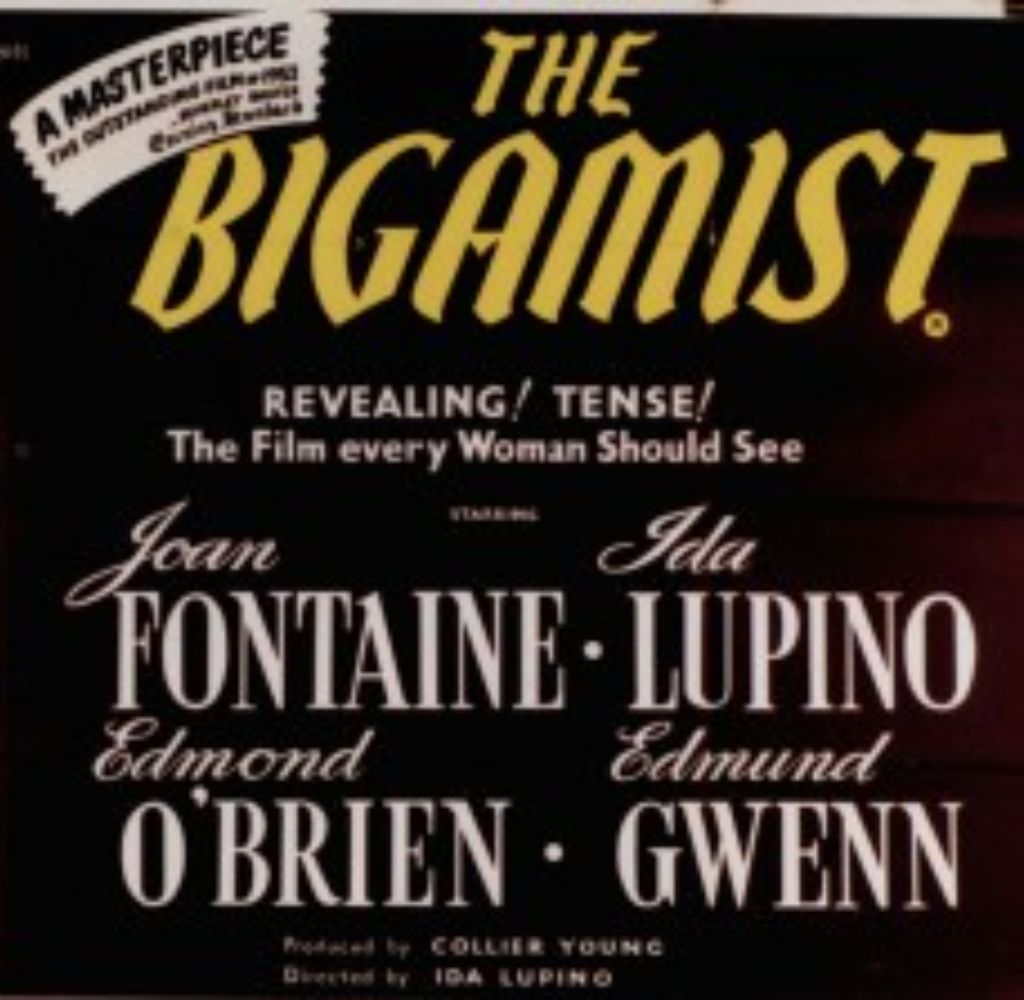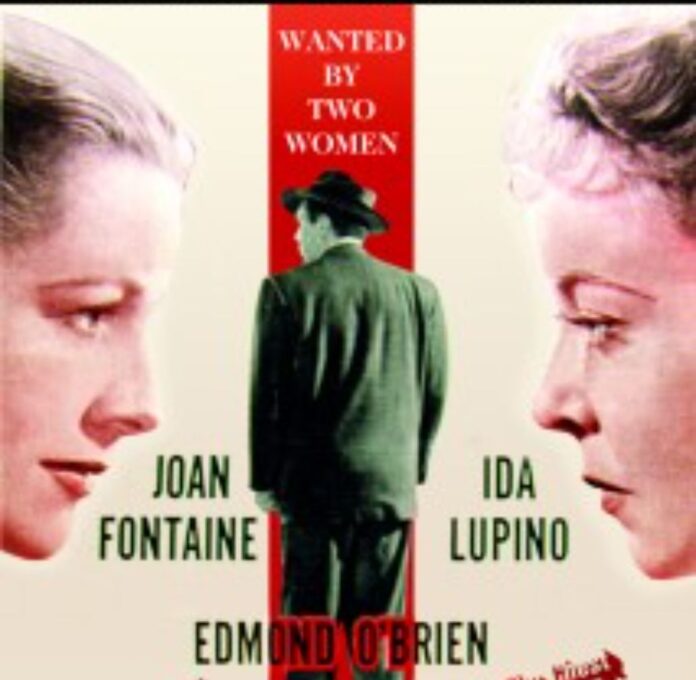Discover the captivating nuances of “The Bigamist” (1953) in this illuminating and visually enhanced DVD review.
Observing the film industry and its media coverage, which often claims to support women in film.
It’s puzzling why there is such limited acknowledgment of trailblazing female filmmakers like Ida Lupino.
Hollywood’s inaugural female producer-director, Lupino, played a significant role in shaping her films by co-writing some of them.
While Director Dorothy Arzner preceded Lupino, Arzner did not serve as a producer.
Importantly, Lupino proved to be a highly skilled filmmaker, and her contributions to movies and television have endured the test of time.
DVD Review: “The Bigamist” (1953)
One of her standout films, “The Bigamist” (1953), has been remastered by Film Chest and is set for release on DVD.
Except for a retrospective at the Museum of Modern Art in 2010, Ida Lupino’s accomplishments as a filmmaker have mostly been overlooked, overshadowed by her acting career, particularly her roles at Warner Bros. in the 1940s.

She portrayed tough, hard-edged women in melodramas like “They Drive by Night,” “High Sierra,” “The Hard Way,” and “The Man I Love.”
Occasionally, Warner Bros. assigned her more traditional ingenue roles in films such as “The Sea Wolf,” “Out of the Fog,” and “Deep Valley,” her final one with the studio.
Lupino humorously referred to herself as the “poor man’s Bette Davis” during her time at Warner Bros.
Her debut film for the studio, “They Drive by Night,” was a partial remake of “Bordertown,” with Lupino assuming the role initially played by Davis.
As her Warner Bros. contract expired in the late 1940s, Lupino chose not to renew it, opting to freelance like many other actors during the decline of the studio system.
Lupino had often faced “suspension,” the studio’s punitive measure for “rebellious” actors, a situation she shared with Davis, James Cagney, and Olivia de Havilland.
De Havilland successfully sued Warner Bros. over this practice, with the California Supreme Court deeming it illegal, marking the initial blow to the studio system.
The subsequent U.S. Supreme Court antitrust ruling mandating studios to divest their theater chains and the rising popularity of television further undermined the studios.
Lupino’s interest in filmmaking burgeoned during her “suspension” periods, where she immersed herself in the behind-the-scenes aspects, learning from directors and writers.
Her desire for complete control over her film work was a significant motivator.
Consequently, besides participating in other studios’ films, Ida Lupino and her second husband, Collier Young, established an independent production company named The Filmmakers.
Their venture began with the unintentional directorial debut of Lupino in “Not Wanted” (1949).
Originally, Elmer Clifton was contracted as the director for “Not Wanted,” a film addressing out-of-wedlock pregnancy, but he suffered a heart attack before filming began.
Lupino took over, uncredited. Subsequent directorial projects for The Filmmakers included “Never Fear,” “Outrage” (dealing with the taboo subject of rape), and “Hard, Fast and Beautiful.”
In 1953, Lupino directed her notable works, “The Hitch-Hiker” (her sole film noir) and “The Bigamist.”
At this juncture in her career, she humorously modified her self-description to “the poor man’s Don Siegel,” acknowledging Siegel’s knack for achieving remarkable results on modest budgets.
Lupino’s directing career transitioned primarily to television after “The Bigamist,” except her last theatrical film, the comedy “The Trouble with Angels” in 1966.
(Many of Lupino’s small-screen works, including episodes of “Alfred Hitchcock Presents,” “Thriller,” and “The Twilight Zone,” revealed her flair for the macabre.)
In the case of “The Bigamist,” Lupino initially wasn’t slated to direct and intended only to act in the film.
The project, co-produced and co-written by Lupino’s then ex-husband Young, took a turn when Jane Greer, who was set to play the other female lead, withdrew. Fontaine offered to step in but insisted that Lupino direct.
Despite Lupino’s initial reluctance to direct herself, she agreed to ensure the film’s progression.
Consequently, the two Mrs. Youngs, played by Lupino and Fontaine, portrayed the two wives of the protagonist Harry Graham (Edmond O’Brien).
This San Francisco-based small business owner also serves as his own traveling salesman.
The film introduces Harry and Wife #1, Eve (Fontaine), during an adoption application interview with the benevolent child welfare official Mr. Jordan (Edmund Gwenn).
Although the interview went well initially, Harry’s momentary hesitation while signing a form granting permission for a background investigation raised doubts in Jordan’s mind.
After the Grahams leave, Jordan records his concerns in the Dictaphone notes, expressing reservations about Mr. Graham’s behavior during the interview and signaling potential issues for further investigation during next week’s home inspection.
“The Bigamist” adheres to a conventional three-act storytelling structure from this juncture.
Act One unfolds as a miniature mystery, with Mr. Jordan acting as a determined sleuth intent on uncovering Harry’s secret.
Jordan goes to great lengths, trailing Harry to Los Angeles, where most of his out-of-town business occurs.
Eventually, Jordan stumbles upon the revelation that contrary to staying in a hotel, Harry owns a home in the LA suburbs.
Showing up unannounced at Harry’s doorstep one night, Jordan discovers what the audience is already aware of due to the film’s title and advertising—that there is a second Mrs. Graham, and Harry and Wife #2, Phyllis (Lupino), have an infant son.
Act Two comprises an extensive flashback, occupying roughly half the film, as Harry recounts to Jordan how he ended up with two households.
The narrative reveals that Harry and Phyllis had an unconventional meeting when, out of sheer boredom, Harry took an LA bus tour of stars’ homes and initiated a conversation with Phyllis, a waitress in a Chinese restaurant.
Their one-night stand resulted in Phyllis’ pregnancy. Despite lacking the resolve to divorce Eve (also his business partner) and wanting to do right by Phyllis, Harry proposed marriage to her, establishing the family he couldn’t have with Eve.
The segments depicting Harry and Phyllis’ brief encounter and her subsequent pregnancy exemplify the absurdities imposed by the then-weakened but still enforced Production Code.
Due to the Code’s restrictions, there is no suggestion of intimacy between Harry and Phyllis on that night, and the term “pregnant” is never spoken when Harry learns about Phyllis carrying his child.
The Code also dictates the film’s third act’s abrupt and unsatisfying resolution, aligning with the requirement that all lawbreakers face legal consequences.
The script of “The Bigamist,” along with Lupino’s direction, Leith Stevens’s music score, and George Diskant’s black-and-white cinematography.
It fluctuates between domestic drama and noir, particularly in the initial two acts before settling more definitively into the former genre.
Despite the expectation set by the seedy restaurant where Phyllis works and the ominous appearance of its owner, suggesting a predominant noir atmosphere, the film leans towards domestic drama.
Despite the subject matter’s severe nature and the material’s earnest treatment, the script incorporates playful Hollywood in-jokes. Notably, there are two references to Edmund Gwenn’s iconic role as Kris Kringle in “Miracle on 34th Street.”
Eve tells Harry that she thinks Jordan “looks like Santa Claus,” during the bus tour, the driver/guide identifies Gwenn’s home, calling him “the little man who is Santa Claus to the whole world.”
The homes of Lupino’s former Warner Bros. colleagues, Barbara Stanwyck and Jane Wyman, are also mentioned in this scene.
Consistent with her usual practice, Lupino extracts excellent performances from her cast, including herself.
She and Fontaine deliver subtle, understated acting performances as the two Mrs. Grahams.
Gwenn provides a charming, low-key portrayal of a dedicated public servant torn between duty and pity when confronting Harry about his deceit.
O’Brien successfully portrays Harry as ultimately sympathetic and somewhat pathetic, infusing the character with the sweaty neuroticism typical of his roles in the late 1940s and early 1950s.
While Film Chest’s press release claims that this version of “The Bigamist” was “restored from original 35mm materials,” the state of these materials did not match the preservation quality of Film Chest’s previous remastered film release, “Hollow Triumph.”
The visual quality of Film Chest’s “The Bigamist” DVD is generally sharp and crisp, but occasional scratching is noticeable, and there is a slight jumpiness in the opening credits.
Nevertheless, the overall quality of this version of “The Bigamist” significantly surpasses Alpha Video’s earlier DVD release, which featured a murky print and a muddled soundtrack.

